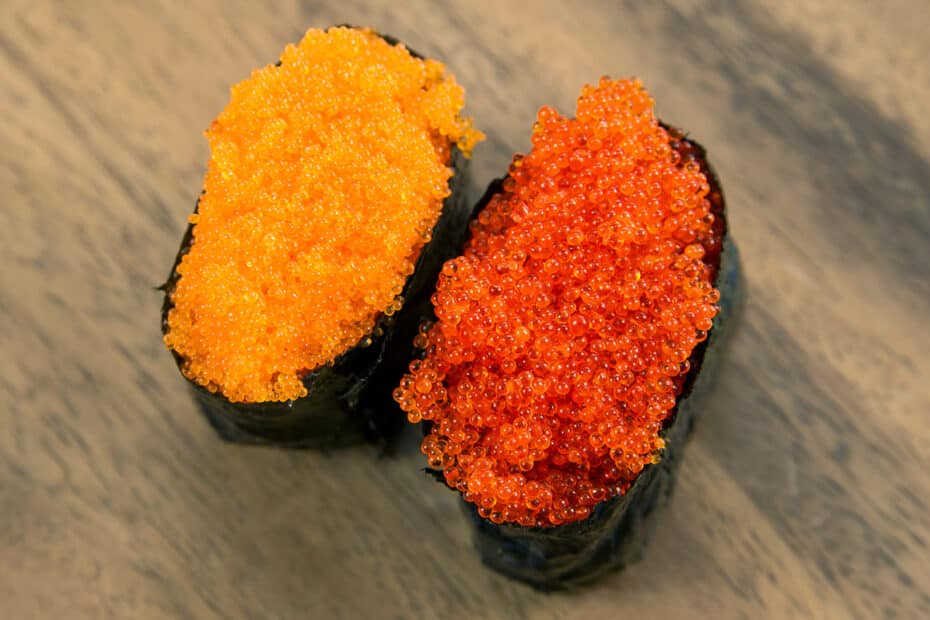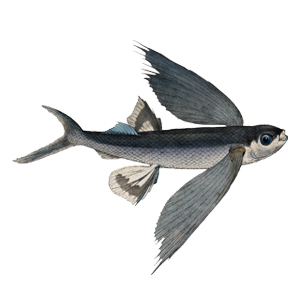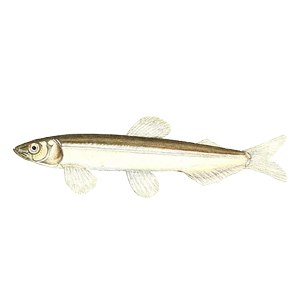If you’ve eaten sushi, you’ve likely tried tobiko and masago. These crunchy, colorful fish eggs are everywhere but fly under the radar.
This post explores their similarities and differences, their taste, where to find them, and more.
Overview of Tobiko and Masago
Tobiko (とびこ) and masago (まさご) are popular types of fish roe that are used for sushi—especially in the West. You will find both served on their own as gunkan-style sushi or used as garnishes on top of nigiri.
But most Americans will be familiar with tobiko and masago from their use on California rolls, and other types of uramaki (inside-out rolls).
Masago and tobiko are both superficially similar in appearance: small and often bright orange. And both types of fish eggs are mild in flavor and easy to love.
Additionally, neither tobiko nor masago is very expensive. And because they freeze well, they can be found year-round.
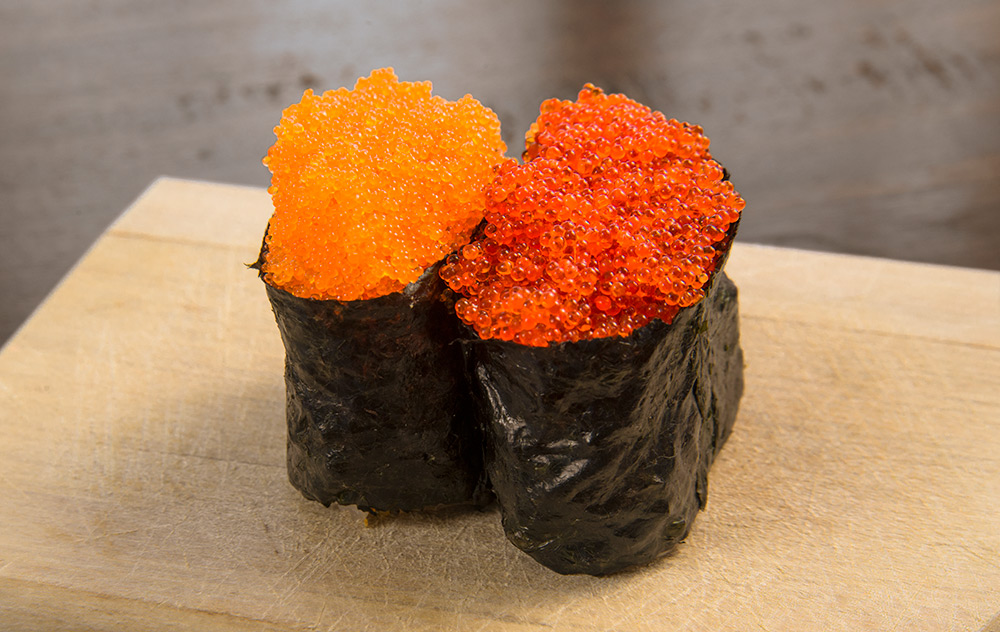
Tobiko vs Masago
Tobiko and masago have similar appearances and are used for the same kinds of sushi preparations. And both fish roes have similar color varieties, as well. Masago and tobiko each have clean flavors that are mildly briny and sweet.
But there are also some key differences between tobiko and masago. Tobiko is slightly larger in size than masago. This is most noticeable when they’re presented side by side. And once you bite into them, you’ll notice another major difference: tobiko is much crunchier in texture than masago. Tobiko has a satisfying pop, while masago is softer.
The flavors of flying fish and smelt roe are also a little different. Both are mild, but masago has a gentler flavor. Tobiko is often cured with dashi or dashi extract and will have a smoky umami. It also has a fruitier flavor.
Lastly, tobiko often has some element of sake vinegar and mirin in its curing liquid. Masago usually doesn’t. This means that tobiko often has a mild vinegar and sweet rice flavor.
Price Difference of Masago and Tobiko
Both tobiko and masago are affordably priced sushi ingredients. However, masago tends to be a little cheaper than tobiko. Its lower cost is one reason why masago is a popular tobiko substitute at American sushi restaurants.
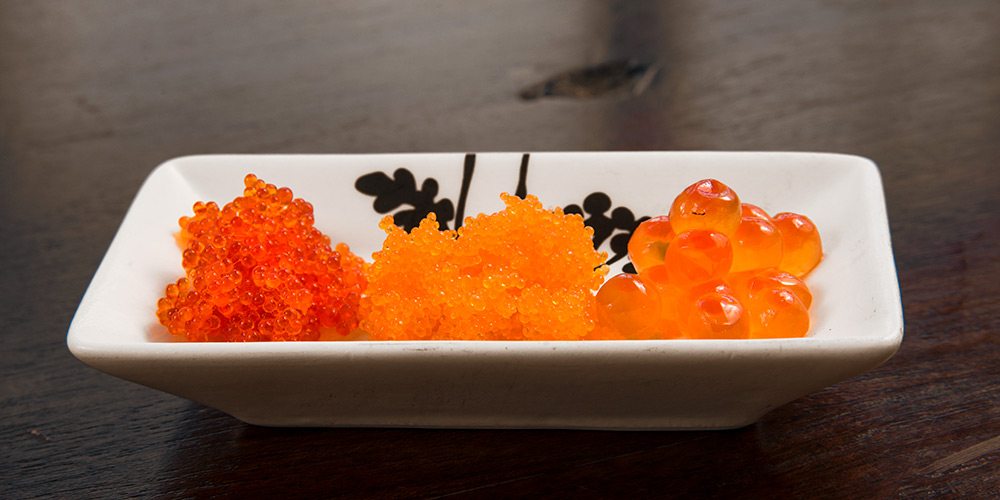
Other Popular Fish Roe for Sushi
Ikura, or salmon roe, is the most popular type of fish egg one will encounter in a sushi restaurant. It’s more prized than tobiko or masago. You’re also more likely to find ikura served by itself in high-end Japanese restaurants.
Ikura has a softer texture than tobiko, It has also a gooey interior, unlike masago or tobiko. Ikura has a fuller flavor too. It’s a bit fishier, but overall it’s still pretty mild. There are several varieties of salmon and their eggs all have differences in size and flavor. The majority of ikura on the market are from the chum salmon species.
Occasionally, you might find sturgeon roe, or caviar, at high-end Japanese restaurants. The texture of sturgeon eggs is softer, their appearance is opaque and dark, and they have a fuller flavor. Like salmon roe, many types of sturgeon roe exist. But overall, they’re much more expensive than tobiko and masago.
Serving Tobiko and Masago
Both flying fish and capelin roe are popular as sushi and are used in several similar ways.
Gunkan Sushi
Gunkan is sushi with nori seaweed wrapped in a cylinder around sushi rice. This nigiri spinoff was invented to hold salmon roe (ikura). And it works just as well with tobiko and masago.
At most Japanese restaurants, tobiko and masago gunkan are affordably priced. Especially masago. They both have a very crunchy, grainy, but soft texture. Tobiko is slightly firmer, however.
Masago and tobiko gunkan are somewhat advanced, but neither is as intense as uni or salmon roe. I highly recommend them for their value, variety, and unique texture.
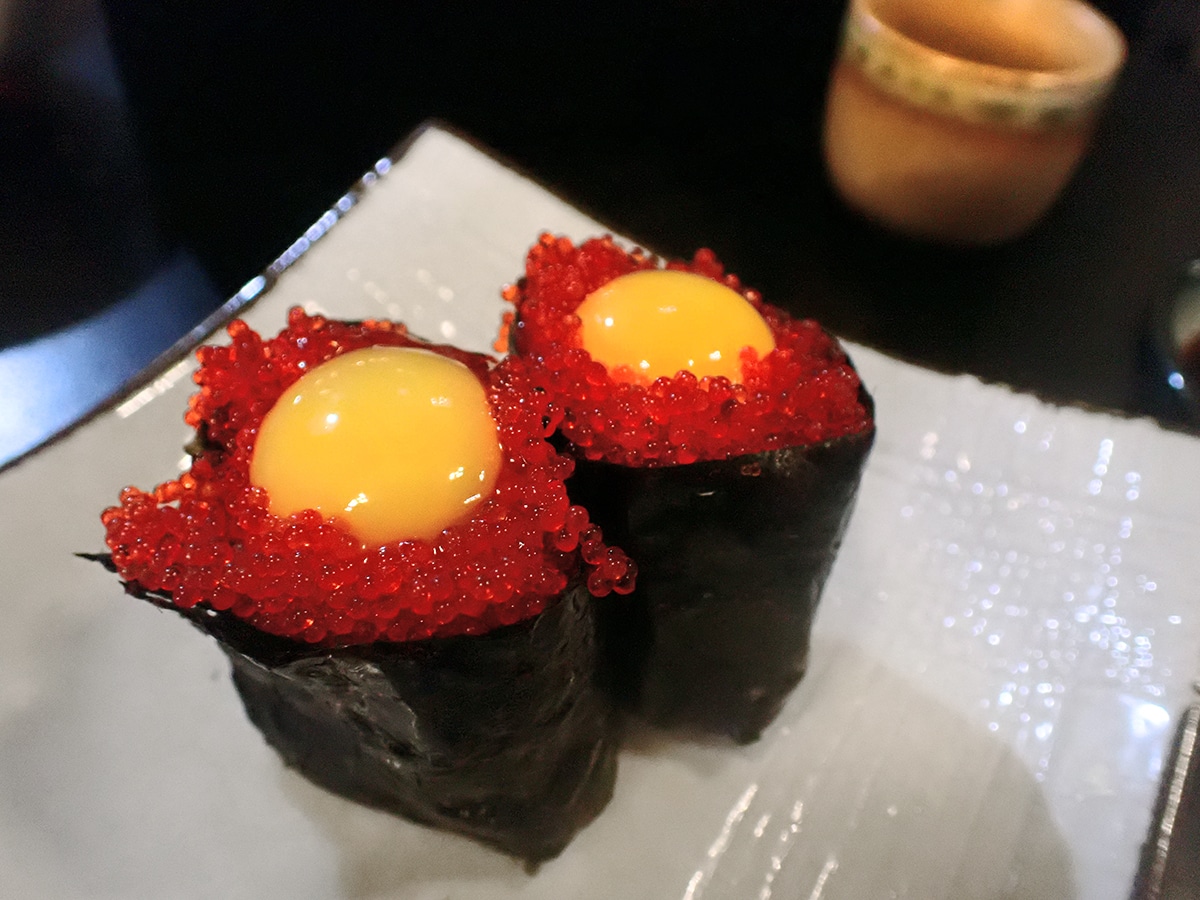
Add a Quail Egg: Uzura
Raw quail egg is a classic addition to gunkan-style sushi. And in my opinion, it works best with masago and tobiko. The reason is the creamy, savory addition of egg is complimentary to the crunchy, grainy texture of the fish eggs.
It’s egg-on-egg and delicious.
Tobiko and Masago on Sushi Rolls
This is the most common way these smaller fish eggs are served. Masago and tobiko add color and crunch to sushi rolls, especially elaborate Western-style sushi and hand rolls.
If you’re making sushi rolls and including masago or tobiko, why not make a few pieces of gunkan as well?
Chirashi and Garnishes
The last common ways tobiko and masago are used is in chirashi sushi and as a garnish.
Chirashi sushi is a bed of sushi rice with ingredients “scattered” on top. Fish roe is a popular addition, especially salmon eggs. But tobiko and masago are common alternatives.
Finally, small clusters of masago or tobiko look great placed on pieces of nigiri, sashimi, and other raw seafood dishes.
Pairing Drinks with Tobiko and Masago Sushi
There are many types of alcoholic beverages that pair well with tobiko and masago. These beverage pairings focus specifically on these fish roes. So the pairings work best with gunkan and sashimi presentations of tobiko and masago.
Pairing Flying Fish and Smelt Roe with Sake and Beer
Sake makes a delicious pairing with both masago and tobiko. Look for sake styles that aren’t too rich or earthy and you’re good to go.
Sparkling sake, which often has some sweetness, makes for an excellent pairing too. The sweet ricey flavors marry with the salty-sweet umami of the fish roe. The bubbles and acidity then work to cleanse the palate.
Beer and fish roe can be a good pairing if the beer isn’t too strong. Lighter lagers like Sapporo Premium and Asahi Super Dry fit the bill. German Pils and Czech Pilsner are more flavorful than those Japanese beers but will still taste great with masago and tobiko. If you can find it, the subtly smoked Schlenkerla Helles rauchbier is outstanding with tobiko.
Wine Pairings with Masago and Tobiko
Fruity sparkling wine is also a nice pairing choice for the same reason that sparkling sake works so well. Prosecco is an especially good option. Moscato d’Asti is a good choice too, and it really shines with wasabi tobiko and masago.
Dry sparkling wines like Cava and Champagne also make an elegant and refreshing pairing with most types of fish roe.
Still white wines often pair well with flying fish and smelt roe. This is especially true if they have briny or mineral elements, and also with wines that have some residual sugar.
Muscadet, Chablis, and Santorini Assyrtiko are delicious examples of the former. Demi-sec Vouvray and some Pinot Gris are examples of the latter. And German Kabinett Reisling has a little of both.
As a bonus, all of these wines work with a ton of other dishes you’ll find in a Japanese restaurant.
Get more sushi and wine pairing suggestions to improve your next meal.
Shochu Pairings that Work
Lastly, vodka and caviar is a classic pairing. A Japanese twist on this idea that works well is honkaku rice or barley shochu. It’s best to stick to shochu which’s between 20-24% ABV. Brands like Iichiko Silhouette, Kawabe, and Hakutake Shiro are great choices to pair with tobiko and masago as gunkanmaki.
Dietary and Nutritional Information
Tobiko and masago are both nutrient-rich, and they’re low in calories and carbs. Both are loaded with healthy fats like Omega-3 fatty acids. They’re also high in protein and minerals.
Masago and tobiko are both rich in vitamins. Vitamin B12 levels are especially high. Vitamin C and E levels are also somewhat high.
Mercury levels for both types of fish eggs are also much lower than larger predatory fish like tuna and mackerel.
The major downside of masago and tobiko is high levels of sodium. The use of salt, and sometimes soy sauce, only adds to their sodium levels.
High fructose corn syrup is also commonly used for processing masago.
Are Tobiko and Masago Gluten Free?
Naturally, both tobiko and masago contain no gluten. However, many commercially available examples of these fish roes use some soy sauce for curing. Soy sauce is not gluten-free, so be sure to check the label or ask the chef about the ingredients list.
Proper Storage of Tobiko and Masago
Tobiko and masago both freeze well and don’t lose their texture and flavor. Once thawed, keep them refrigerated. They’ll taste best within 3 or 4 days.
Sustainability
Both of these fish have multiple species, commercial uses, and fisheries across the globe. Pinpointing an exact answer is challenging, but we can get you close.
Is Tobiko Sustainable?
There are dozens of species of flying fish located across the globe. The fish themselves are often eaten, and their eggs are popular as tobiko. Different fisheries exist for the adults and for the eggs.
Overall, the practice of harvesting eggs limits the size of future generations of flying fish. The populations near Taiwan, southern Japan, and the East China Sea are considered healthy. But they’re susceptible to overfishing.
Is Masago Sustainable?
The majority of capelin, and therefore masago, are harvested in the Atlantic. The Monterey Bay Aquarium’s Seafood Watch lists these stocks as either certified or good alternatives.
Pacific stocks aren’t as heavily fished and information about their sustainability is hard to find.
The populations of capelin fluctuate dramatically from season to season. Capelin are also caught as bycatch in other fisheries. And finally, they’re highly sensitive to environmental changes. Capelin are susceptible to overfishing for these reasons.
Conclusion
Did I miss anything?! If you want to know more about masago or tobiko, please let me know.
I’m also curious, have you used tobiko or masago at home? It’s easy to use in sushi rolls and nigiri. But have you tried it? And if so, any tips for everyone else?
Finally, if you want to master the sushi bar, check out my sushi and sashimi guide.

Brad Smith
I fell in love with Japanese cuisine nearly two decades ago and soon landed my first Japanese restaurant job. Many years later, I created this site to geek out on Japanese food and beverage.
I love learning and my professional certifications include the J.S.A. Sake Diploma, Certified Sommelier (CMS), Certified Sake Advisor (SSA), Certified Shochu Advisor (SSA), Certified Specialist of Spirits (SWE), and Certified Beer Server (CCP).
Check out my about page to learn more.
